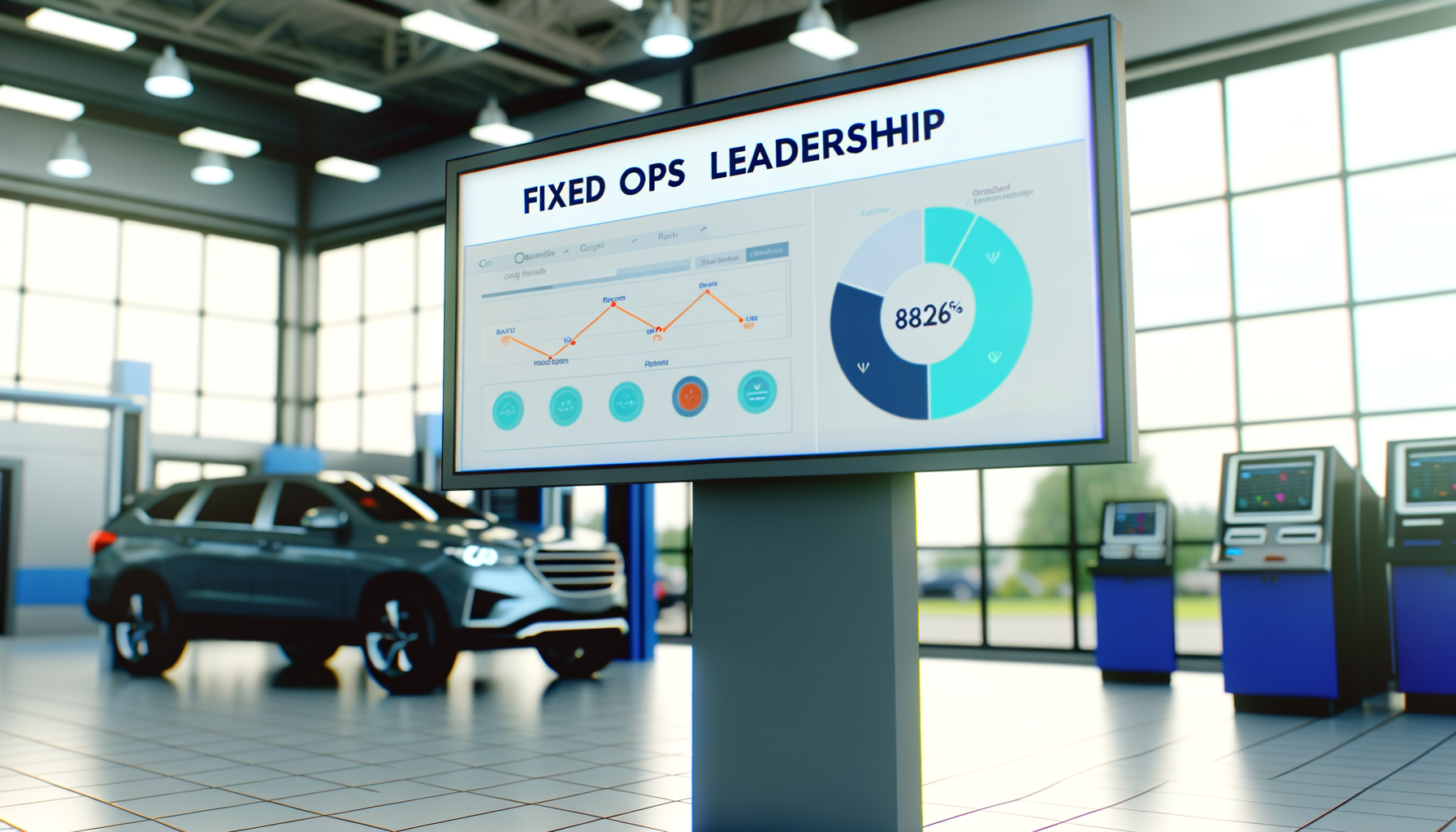Lead the Charge: Mastering Fixed Ops for Tomorrow's Automotive Landscape

Understanding the 2025 Fixed Ops Landscape

The automotive service industry is undergoing significant shifts, with a 15% increase in EV-related repairs and new OEM training requirements.
Service managers must adapt to these changes by implementing forward-thinking strategies and technologies.
An actionable step is to conduct a quarterly review of service offerings to align with emerging trends and customer needs.
Key Leadership Qualities for Fixed Ops Directors

Effective leadership in fixed ops requires a blend of technical knowledge, emotional intelligence, and strategic vision.
Directors must cultivate a culture of continuous improvement and innovation among their teams.
Practical implementation includes setting up regular training sessions and workshops to enhance team capabilities.
Building High-Performing Service Teams

High-performing teams are the cornerstone of service department success and are crucial for meeting customer expectations.
Creating a team-oriented environment involves clear communication, defined roles, and recognition of achievements.
One effective method is implementing a peer recognition program to boost morale and engagement.
Leveraging Technology for Operational Excellence

Technology is a key enabler of operational efficiency, with tools like service management software streamlining workflows.
Fixed ops leaders should prioritize the integration of automation and analytics to optimize operations.
Step-by-step, this involves assessing current technology gaps, choosing the right tools, and training staff on new systems.
Customer-Centric Strategies for Service Departments

Adopting a customer-centric approach is vital for improving satisfaction and loyalty in service departments.
Service departments can implement digital scheduling, personalized communication, and feedback loops to enhance customer experience.
A practical step is to leverage customer feedback to make continuous improvements in service delivery.
Navigating Common Fixed Ops Challenges

Common challenges like parts shortages and staff turnover require strategic solutions and proactive management.
Addressing these issues involves building strong supplier relationships and investing in employee retention programs.
An effective tactic is to develop an inventory management system that predicts parts needs based on historical data.
Measuring Success: Key Metrics and ROI

Measuring success in fixed ops leadership involves tracking key performance indicators (KPIs) like service cycle time and customer retention rates.
These metrics provide insights into operational efficiency and areas needing improvement.
To calculate ROI, compare the cost of improvements to the financial benefits realized from increased service throughput and customer satisfaction.
Related Topics
Ready to take your service department to the next level?
Schedule your demo today and experience the power of Auto Pro Solutions.
Schedule Demo